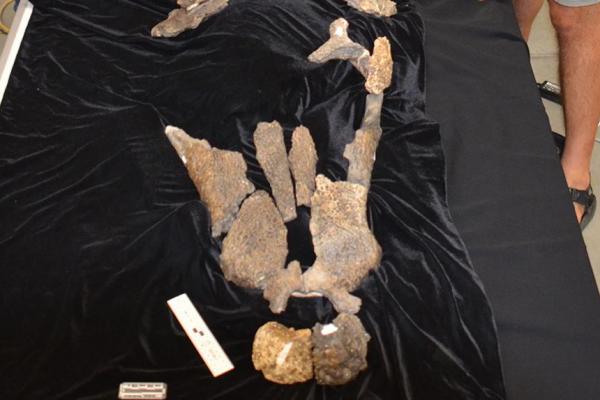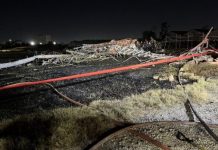Sept. 14 (UPI) — Researchers have identified a new species of prehistoric crocodile in the middle of the Dallas-Fort Worth Metroplex.
The 95-million-year-old giant reptile, a relative of modern crocs, was first discovered by a team of paleontologists from Texas, Tennessee and Wisconsin. Researchers dubbed the new species Deltasuchus motherali and described the specimen in a new paper, published this week in the Journal of Vertebrate Paleontology.
The new species grew up to 20 feet in length, and its strong jaws could take down everything from turtles to dinosaurs.
As Arlington, Texas, has a become increasingly developed, with construction projects turning up fresh dirt, teams of researchers and volunteer fossil hunters have set out to identify potential excavation sites.
In 2002, a team of amateur fossil hunters, including Art Sahlstein, Bill Walker, and Phil Kirchoff, found the site that ultimately yielded Deltasuchus motherali. They named the parcel of fossil-rich land the Arlington Archosaur Site.
The dig site offers researchers a rare glimpse of life in North America during the Cretaceous period, a period that spanned 79 million years and featured a variety of now-extinct marine reptiles.
“We simply don’t have that many North American fossils from the middle of the Cretaceous, the last period of the age of dinosaurs, and the eastern half of the continent is particularly poorly understood,” Stephanie Drumheller-Horton, a researchers at the University of Tennessee, Knoxville, said in a news release. “Fossils from the Arlington Archosaur Site are helping fill in this gap, and Deltasuchus is only the first of several new species to be reported from the locality.”
Specifically, the Arlington Archosaur Site offers a snapshot of both land and freshwater ecosystems between 95 and 100 million years ago. At the time, what’s now the Dallas-Forth Worth Metroplex was a lush peninsula, covered in river deltas and swamps and rich in biodiversity.
Scientists say Deltasuchus is likely to be just the first of many new species to be uncovered at the dig site.






